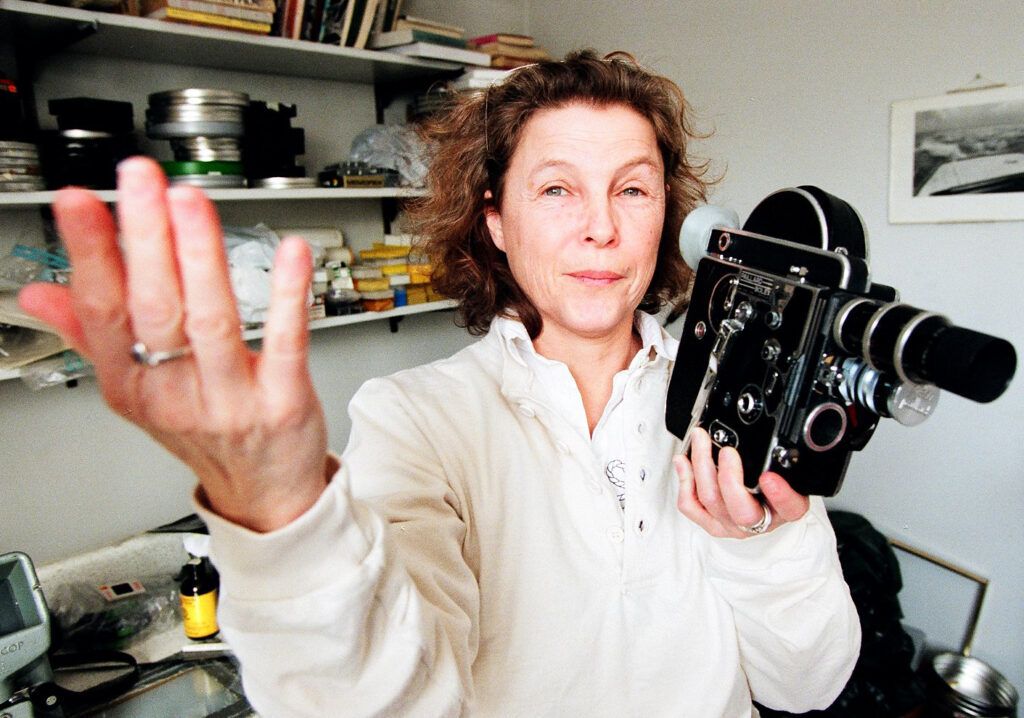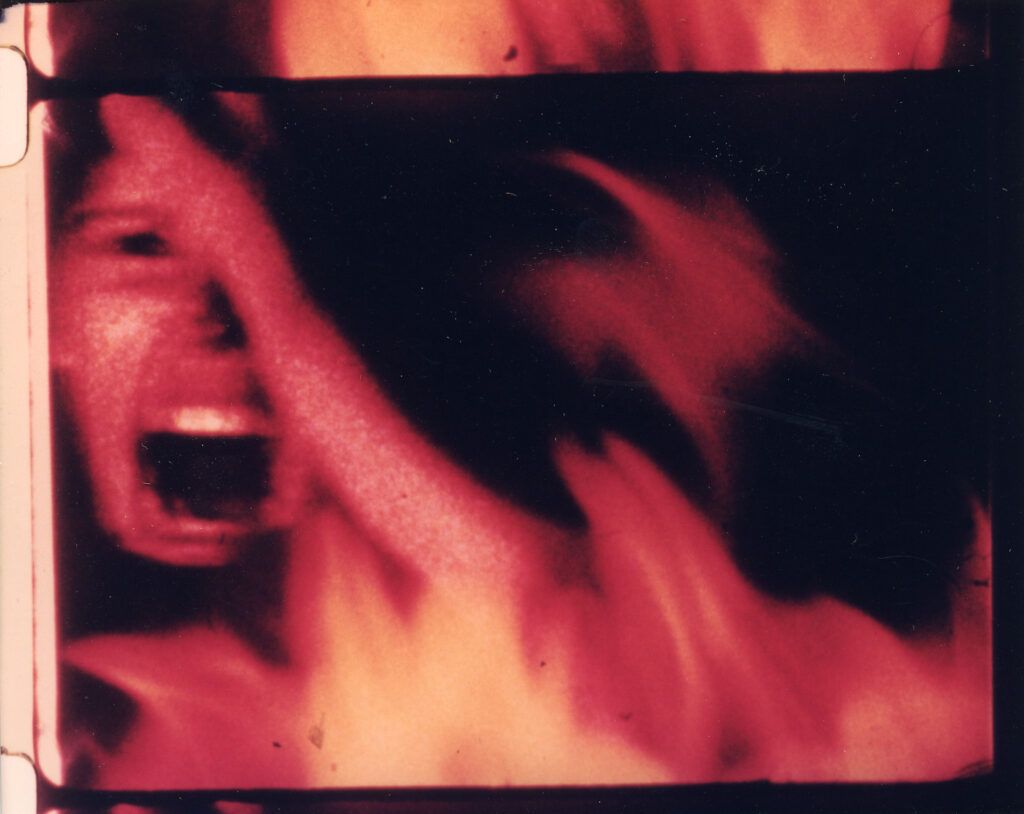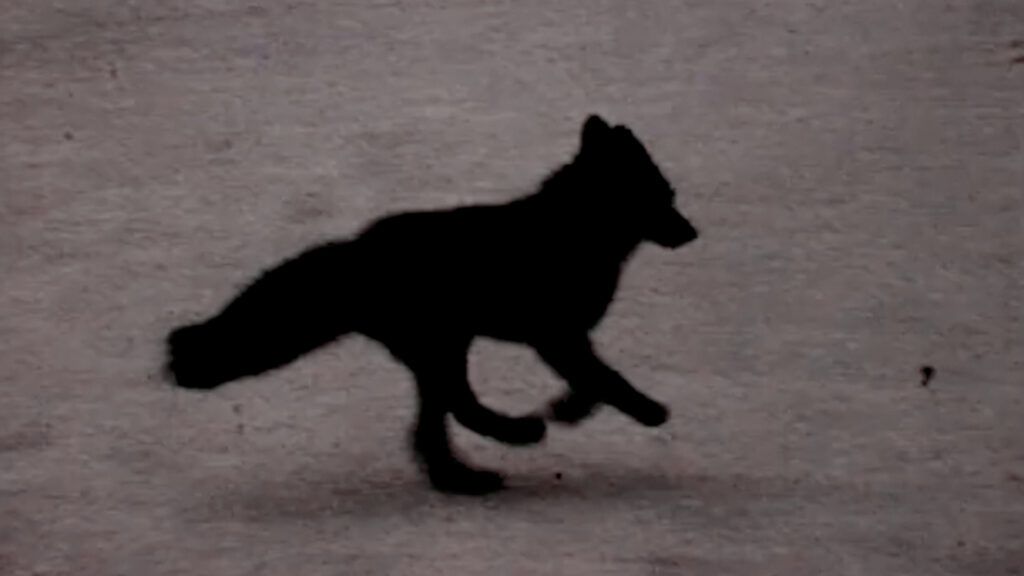In the first session we are dedicating to Barbara Sternberg, she presents one of her most devastating works: Beating (1995). Below, there is an excerpt from the interview “Barbara Sternberg in the 90s, an interview”, where the filmmaker Mike Hoolboom breaks down some of the film’s essentials.

Mike Hoolboom: Beating takes up many of the same themes and problems [from Through and Through, her previous film]
Barbara Sternberg: All the unused voice-over material for Through and Through haunted me. In a way, it spawned the two films which followed. The brief, sync-sound sections in Through and Through speak of oppression, identity (I/we), and the pressures of history on the present. Beating takes these issues up again, seeing history through the personal, expressing the anger, fear and pain suppressed in the denial of oppressive situations. Beating looks at the parts of ourselves (myself) hidden in shadows. The existence of evil and horror. Questions without answers.
Beating is packed with voice-overs which provide the context for the images. Like Laurie Anderson says: This is a record of the times. It’s the thinking, the issues, the terms, the where-we’re-at in terms of social history. The film uses black and white hi-con footage, both negative and positive, bleached, scratched, and sometimes bi-packed together. So positive and negative are there visually as well as symbolically: good and evil are two sides of the same coin. As much as I want it, I can’t only have good. There’s bleached footage of a young girl primping, innocent yet sensual, with the words cunt and bitch scratched on her; a newspaper photo of Syrian Jews left hanging with placards around their necks, and a series of supers move over them showing time, history, our lives—whose story becomes history, is real?
The film was edited in sections which were internally cohesive in terms of content and treatment. From section to section repetitions occur, connections are made, equivalencies between different images achieve the feeling or recognition that everything is related, everything exists in each moment, it is all there all the time.
In my previous films I moved towards the light. But in this film I thought okay Barbara fess up. Can I reveal my anger? Am I brave enough? So I decided to show it. I made a large, primitive-looking, voodoo-type Hitler doll with a photo transfer of his face. I wanted to film myself shitting on him, like when one says “Shit on this” meaning I’m through with it. Diminish him. The camera ran out of film before I could poo but I did get to poke out his eyes and cut off his little penis. This was all done in my kitchen, in a domestic setting, because I live these big historical events in my apartment, which is where I like to work. I film the shadows on the wall of the neighbouring apartment, or shoot my mother or son or whoever’s around. Issues of power and seeing are played out in daily life.


MH: Your mother’s in this film. She lies in bed eating toast and reading the newspaper. She’s shown in close-up, where you focus on the wrinkles of her face.
BS: It’s the view you would get only if you were her daughter snuggling up close on her, which is what I would do when I was little. An intimate bodily experience. These and the next images of Jim MacSwain (a friend) who is sitting chewing his nails, fingering his toes, and eating grapes mean: somebody actually lives all this. History is not abstract, but embodied. These shots are rests, still points in the film.
MH: Most of the voice-over text is quotation, but some of it is yours.
BS: The one passage I wrote is repeated in the film by both male and female voices. This makes ambiguous whether it marks a response to the pain of a woman or a Jew, or for that matter anyone else. Viewers can fill in their own painful situation. It says: “I want revenge, I want you to know how it feels…” and then, “I want you to say you’re sorry so I know you’re sane, we’re the same…” It’s something I wrote a long time ago to my husband. My then husband. My no longer husband. While making the film I felt I also wanted to say that to Germans, or to Germany—if you can say something to a nation.
MH: Tell me about the title.
BS: ‘Beating’ suggests the thing and its opposite. The sun beats down and warms us but it can also burn. The wings of a bird beat and so does one’s heart. At the same time a beating is a fist fight, or you beat yourself up with these issues. The myriad of positive/negative associations from the word beating make it a good entry into the film. There are many beating images in the film. Like the birds.
MH: Why so many birds in the film?
BS: Maybe they’re us, maybe they’re me. The birds are pecking, being frightened and fluttering up in the air, then settling down again and eking it out. Surviving.
MH: The voice-over ends with a joke whose humour gestures towards reconciliation. Can you tell it?
BS: A man is walking down the street when a car pulls up beside him. Who should get out but Hitler. He stops the man saying, “You’re Jewish, what are you doing here?” There’s dog shit on the curb so Hitler puts a gun to his head and tells him to eat it. The car jumps and Hitler drops the gun. The Jewish guy picks it up and says, “Okay, now you eat it.” He runs home to his wife and says, “Honey, you’ll never guess who I had lunch with today!”
The film does move, it doesn’t just stay in anger. Anger is the release. The last image of the film is a text which mirrors the beginning text-on-screen “SOB/S.O.B.” It says: I forgive myself. I forgive you. Maybe only in forgiving will I be able to let go, be freed from the bonds of the past. I don’t know if I’m there yet!
MH: Most of your work in the nineties is characterized by a very gestural camera style reminiscent of abstract expressionism.
BS: I want the film to accumulate in you as experience, and later you can reflect on its particular images. Each experimental film creates its own diction which the viewer has to pick up on, figure out what language they’re in. Learning this language is the key to understanding experimental film, it’s what viewing entails.
My shooting doesn’t hold onto its subject, or study it. Instead the experience flickers past in light and dark and energy. I’ve been searching for ways to move the image, not to deny its specific meaning, but to add to it, and make equivalencies. There might be shots of flames and leaves fluttering and water splashing, but because of the camera movement you experience them in an equivalent way. We apprehend the world bodily. This kind of camera work is less about composition, than about an embodied seeing, a felt perception. The images register between abstraction and representation. The camera glimpses. Time passes, is elusive and can’t be held. The camera sort of swipes at the subject, takes stabs at, approximates. There’s an energy in the movement. It’s like a speech rhythm or rhythm of a written line, going back to the diction analogy.





